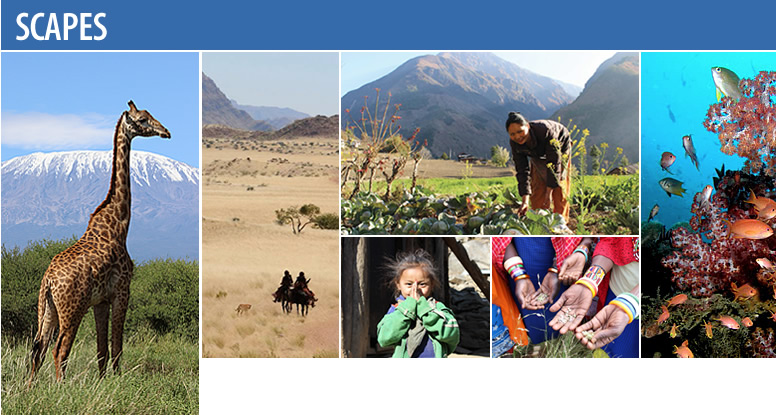SCAPES: Sustainable Conservation Approaches in Priority Ecosystems: 2010-2014 Page

SCAPES partners implemented nine transboundary, landscape-scale conservation activities in 19 countries. In varying degrees, each used policy tools, community engagement, and private sector partners and approaches to reduce threats to priority ecosystems and enhance ecological connectivity across large landscapes.
SCAPES Final Evaluation
This final evaluation of the Sustainable Conservation Approaches in Priority Ecosystems (SCAPES) program assesses conservation strategies used by four implementing partners to address priority threats and strengthen local capacity to conserve biodiversity.
The assessment examines seven strategies based on four Key Principles, gender considerations, and learning opportunities to identify enabling conditions and limiting factors that affected program activity outcomes.
AFRICA
AMERICAS
SCAPES Learning
SCAPES was the flagship program of USAID’s Forestry and Biodiversity Office, and as such played a prominent role in driving innovation across the Agency’s biodiversity conservation portfolio, and ultimately the wider international conservation community. With seven organizations represented through four agreements, and field programs at nine sites in 19 countries around the world, the SCAPES partnership offered an excellent opportunity to tap into some of the best minds in biodiversity conservation.
SCAPES set aside resources for developing and documenting knowledge, with the goal of scaling-up the impact of the program. Three main approaches to learning were employed:
SCAPES Annual Meetings. SCAPES implementing partner and USAID staff met every 12 to 15 months to discuss key technical issues and share progress and experiences. Technical themes included sustainability, conservation and development linkages, and monitoring and evaluation. Participation by field and headquarters personnel strengthened the partnership and facilitated the development of networks across sites and partners.
Partner-Driven Learning. A select number of learning topics proposed by USAID and partners received dedicated USAID support. Partner investments were matched with technical and financial support for activities like regional workshops, literature reviews and new data collection and analysis. Technical outputs and findings from these learning initiatives were disseminated for use by the broader conservation and development community. An example was the development of the SCAPES Governance Tool. SCAPES partners also contributed substantially to Chapter Three of the USAID Biodiversity and Development Handbook.
Evaluation using Limiting Factors Analysis and Theories of Change. At the start of the program, SCAPES conducted a “limiting factors analysis” by surveying partners on the extent to which their programs were hindered by factors such as corruption, lack of financing, or weak laws. A survey at the end of the program determined what progress was made with regard to these barriers. This analysis was one element of the innovative final evaluation, which also retrospectively developed theories of change for each landscape and explored these theories through literature reviews, joint analysis at the Annual Meetings and site visits. This comprehensive evaluation also included an analysis of the SCAPES learning activities.








